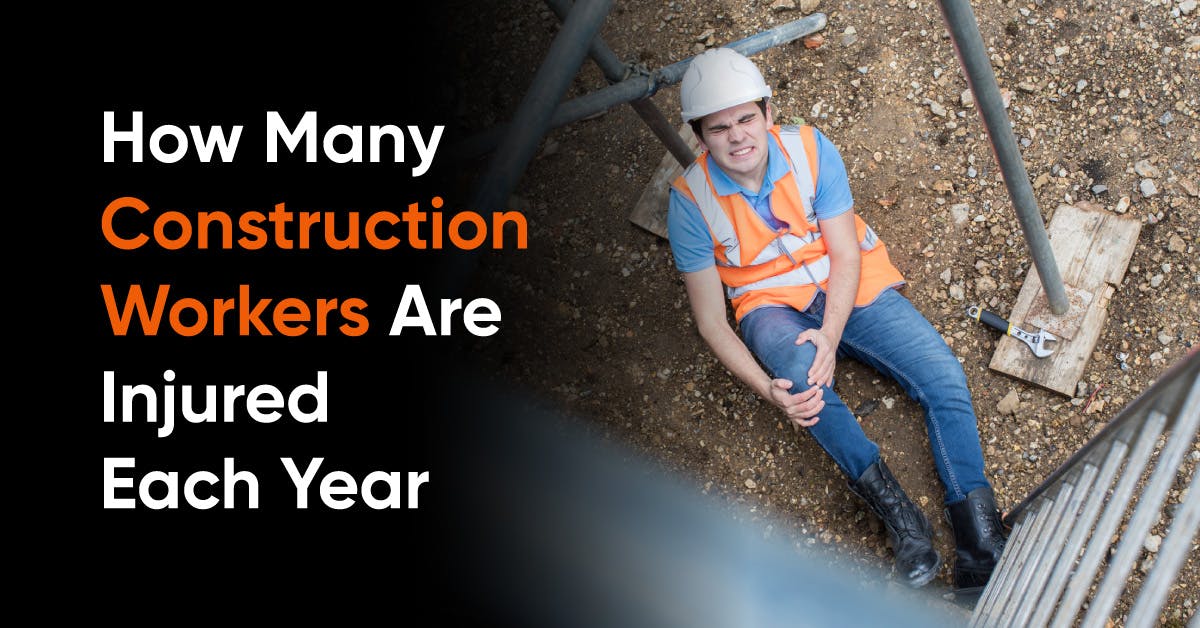The construction industry is a vital part of the global economy. It is responsible for building the infrastructure and structures that form the backbone of modern society. However, it is also one of the most hazardous industries for workers.
Each year, a number of construction workers are injured. In this article, you will look over the alarming statistics surrounding construction worker injuries. Additionally, you will also learn the various factors contributing to these injuries and their consequences.
Here are some facts reported by the Bureau of Labor Statistics(BLS).
- 21,400 nonfatal injuries at work were sustained by construction and extraction workers.
- Construction workers accounted for 96 of the 345 fall-related deaths in the workplaces.
- Hispanic construction worker fatalities are especially troubling, with the number of fatal injuries increasing by almost 90% between 2011 and 2019.
9 Leading Cause Of Injuries Among Workers

The statistics surrounding construction injuries are eye-opening and point at the severity of the situation.
- OSHA reported that approximately 197,300 non-fatal injuries and illnesses occurred in the construction industry in 2019.
- According to the BLS, in 2019, the construction industry accounted for the largest number of fatal workplace injuries in the United States, making up about 21.2% of all such fatalities.
- Construction workers experienced the highest annual fatality rate (308) in the previous five years in 2020. Nearly thirty percent of all fatal injuries related to building and extraction occupations happened to construction workers in 2020. It is, however, the highest percentage since 2016.
However, employers can make worksites safer by understanding the hazards that make construction work so dangerous.
1. Fall Hazards
Falls are one of the leading causes of injuries and fatalities in the construction industry. They can occur from various heights, including ladders, scaffolding, and rooftops. However, the most common factors contributing to falls at construction sites include improper fall protection systems, the use of unsecured tools and materials, and human error. Usually, workers do not know the use of safety equipment, so failure to use proper personal protective equipment (PPE), like harnesses and safety nets, significantly increases the risk of fall-related accidents.
2. Struck-By Accidents
Construction sites are often bustling with heavy machinery and equipment, such as cranes, forklifts, and vehicles. Workers can be struck by these objects, leading to serious injuries. Lack of proper signaling, limited visibility, and failure to maintain a safe distance are some of the factors that contribute to struck-by accidents.
3. Caught-In or Between Accidents
Caught-in or between accidents involve workers getting trapped between two objects or equipment. This can happen when workers are in trenches, working with heavy machinery, or between structural components. Failure to follow safety procedures and a lack of protective measures can result in these accidents
4. Electrocutions
The use of electricity is essential in construction, but it can also be a significant hazard. Electrocutions occur when workers come into contact with live wires, faulty electrical equipment, or poorly maintained power sources. Inadequate training and awareness about electrical hazards can lead to these accidents.
5. Scaffold Collapses
Scaffolding is a crucial part of many construction projects, providing workers with access to elevated work areas. However, scaffold collapses can lead to severe injuries or fatalities. Inadequate assembly, poor maintenance, and overloading of scaffolds are common reasons behind these accidents.
6. Lack of Safety Training and Education
One overarching factor that contributes to many construction injuries is inadequate safety training. Workers who are not adequately trained in hazard recognition, safety procedures, and the proper use of PPE are more likely to be involved in accidents. A lack of understanding and awareness can lead to unsafe behaviors and decisions.
7. Psychological Factors
Construction work can be stressful, with tight deadlines, high-pressure situations, and job insecurity. These psychological factors can contribute to reduced focus and decision-making, increasing the risk of accidents. Mental health issues, such as anxiety and depression, can also affect a worker's safety. Additionally, everyday accidents, injuries, illnesses, and fatalities at the working sites make them more exhausted and vulnerable, which becomes another major cause of employees' health hazards and safety.
8. Poor Communication and Coordination
Effective communication and coordination are vital for preventing accidents in construction. Inadequate communication between different teams, subcontractors, and workers can lead to confusion and unsafe conditions. Miscommunication about project plans, changes, and safety requirements can increase the likelihood of accidents.
9. Inadequate Supervision of Employers
The role of supervisors and site managers is crucial in ensuring a safe work environment. Inadequate supervision or a lack of enforcement of safety protocols can result in workers taking risks and not adhering to safety guidelines. A culture that prioritizes productivity over safety can lead to these issues.
Conclusion
Construction work is essential for the growth and development of society, but it comes at a high cost in terms of worker injuries. The statistics are alarming, and the consequences are severe. The construction industry and its stakeholders have made significant strides in improving workplace safety, but there is still much work to be done.
The annual toll of injuries among construction workers highlights the need for continued vigilance and the implementation of comprehensive safety measures. By prioritizing safety regulations and courses such as OSHA 10-hour training and OSHA 30-hour training, workplaces can foster a culture of safety. Doing this will significantly reduce the number of construction workers that are injured each year.


